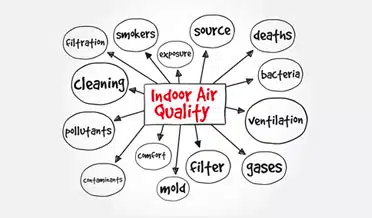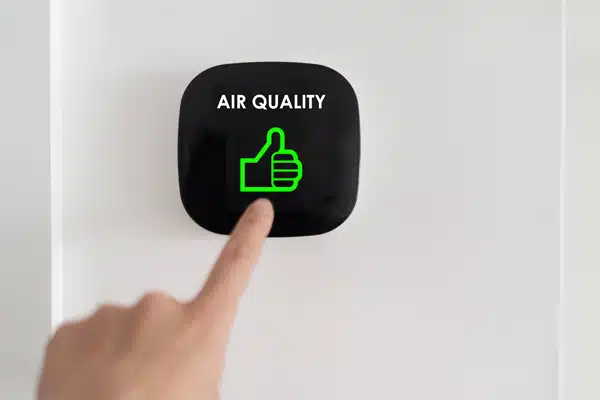Is Your HVAC System Affecting Your Indoor Air Quality?
Sir Edward Coke, a 17th-century English jurist, wrote, “The house of everyone is to him as his Castle and Fortress.” It is used in the legal field, but it reflects how most people feel about their home. “Home” is a retreat from daily threats and dangers. Homeowners do everything possible to correct the problem and reestablish security whenever there is danger. However, what if danger is lurking on the inside of the home? Indoor air quality is just such a danger.
Poor indoor air quality affects the most necessary human function—breathing. Airborne particles can irritate the eyes, nose, and throat, resulting in runny noses, watery, itchy eyes, a sore throat, and intense headaches. When family members are vulnerable with compromised health conditions, poor indoor air often triggers allergies or asthma attacks. This danger needs to be changed, so let’s get to it.
Sources of Pollution to Your Indoor Air Quality
Each home is unique, but pollution sources are quite common.
- Organic particles abound, both plant and animal. Seasonal allergens include pollen from trees and wildflowers (or weeds, if you prefer), mold, and mildew. Year-round allergens include dander (skin cells) and hair from pets or livestock. Of course, we must not forget the danger posed by viruses and airborne bacteria.
- Inorganic particles are also serious threats. These include exhaust from family vehicles, lawn equipment fuel, paints, and solvents. The local environment also contributes to the problem. If your home is near a highway or a dirt road, expect dust to find a way inside your home.
- When furniture, carpets, flooring, and finishes are manufactured, the materials contain volatile organic compounds that will be released into the surroundings for years. We recognize them as a “new” smell, and it does not pose a danger unless in high concentrations.
Mitigating Problematic Indoor Air Quality Particles
Particles from different sources will need to be removed differently. The object of mitigation is to remove pollutants and dilute the number of particles in the air.
- The first line of defense is the air filter in the HVAC system. With each heating or cooling cycle, the filter permanently removes the vast majority of both organic and inorganic particles. Filters are rated by the percentage of particles of a certain size, called Minimum Efficiency Rating Value or MERV. If indoor air quality is a serious concern, check the operation manual to determine the proper range of filter rating for the system.
- The air conditioner removes humidity from the indoor space. Removing humidity prevents the growth of mold and mildew spores. These spores can be extremely dangerous allergens.
- Remember to use natural ventilation and open windows and doors at the right time. Early mornings are ideal. Opening the home to the outdoors dilutes the concentration of particles indoors, but only when the concentration of pollen and mold outdoors is low.
- For further protection, consider adding ultraviolet lights to the ductwork. Ultraviolet rays are the damaging, burning rays that cause sunburns. It disrupts cell walls and neutralizes organic allergens, including pollen, viruses, and dust mites. Your HVAC professional can give details concerning these lights.
- If a family member is extremely vulnerable, consider a room or whole-house air purifier. Purifiers use a series of filters, including activated charcoal. Activated charcoal removes gaseous pollutants, including VOCs and exhaust. Room versions are portable and can be moved to a space most advantageous.
Are You Concerned if Your HVAC is Affecting Your Indoor Air Quality?
Schedule your indoor air quality consultation by calling All Cool AC & Heating at 281-238-9292 or contact us via email and let our NATE-certified indoor air quality technicians put their experience to work for you.









